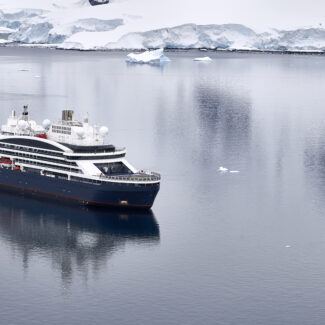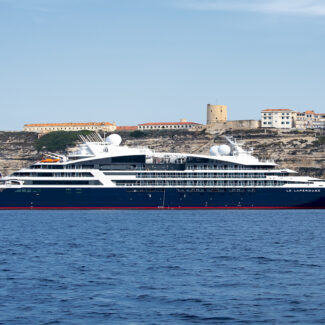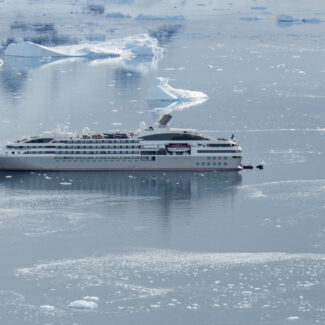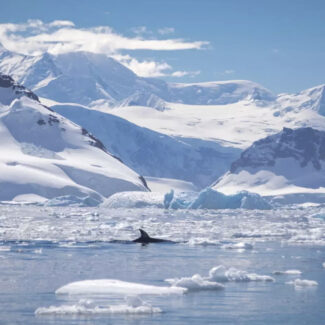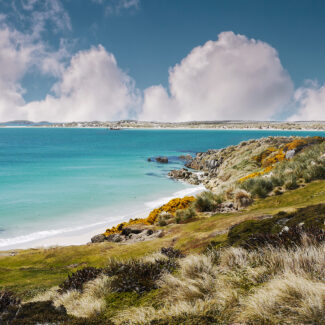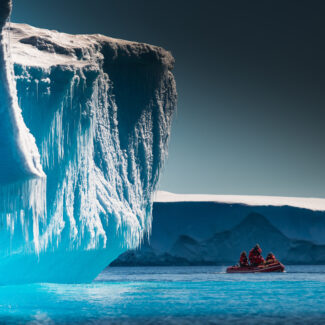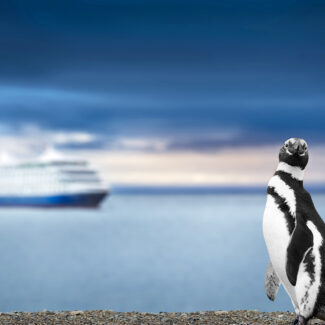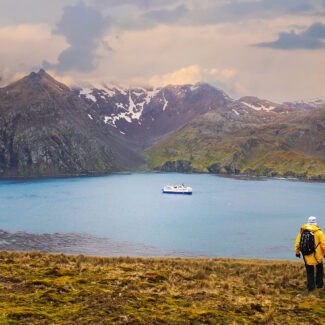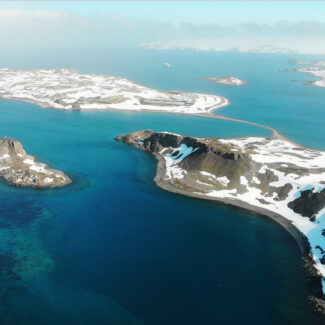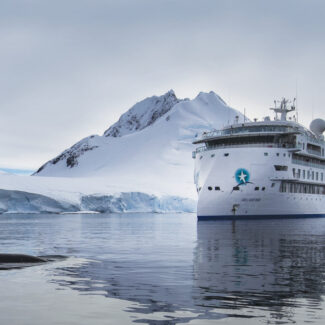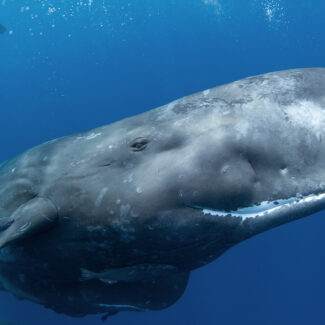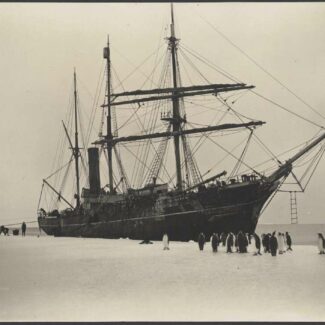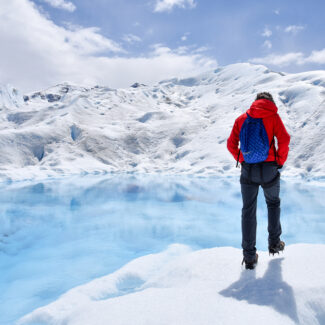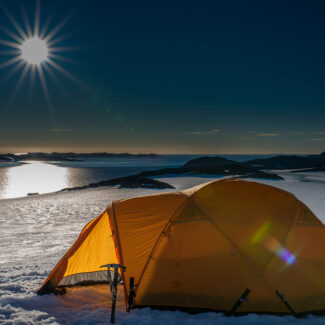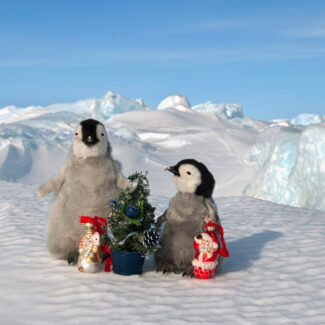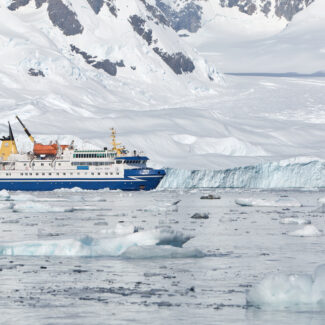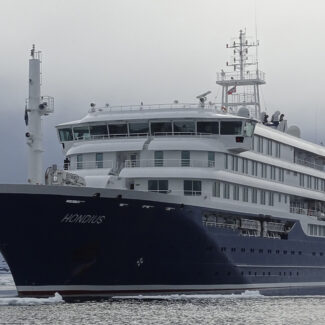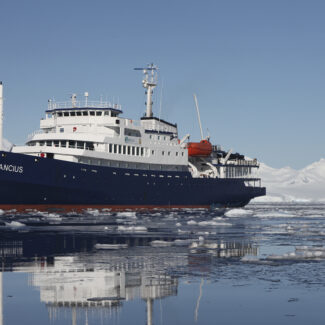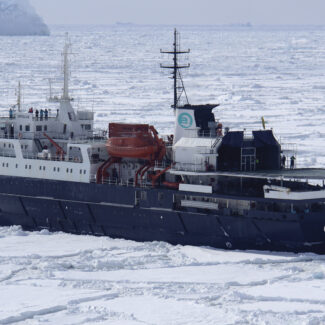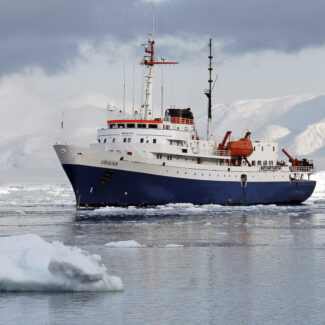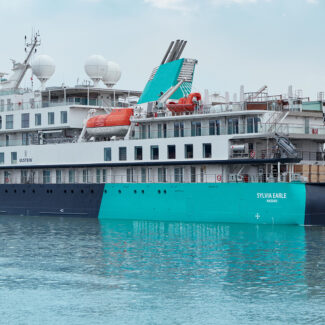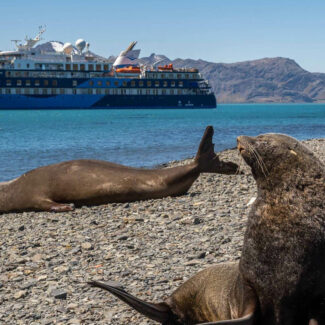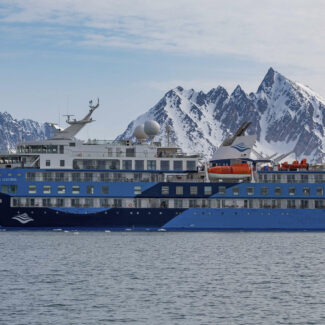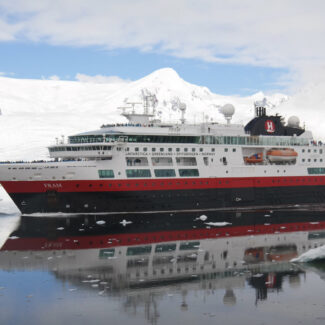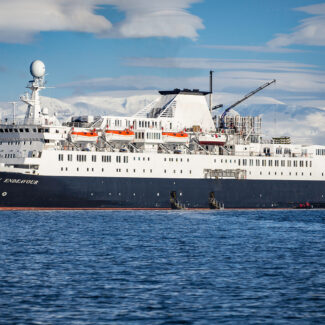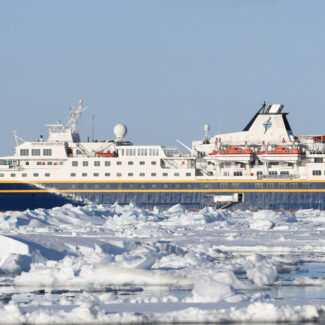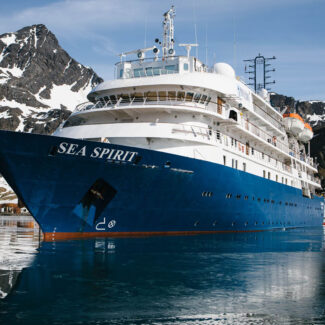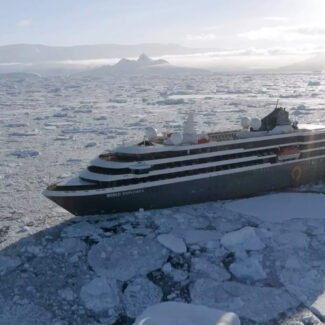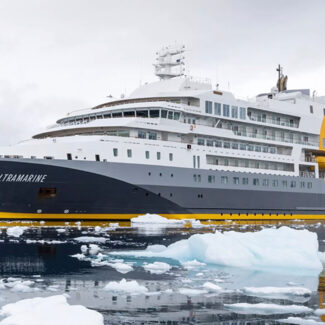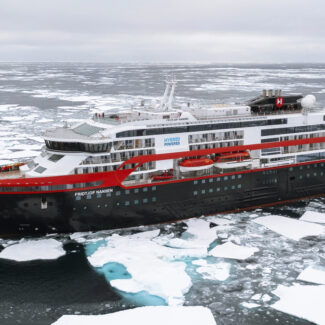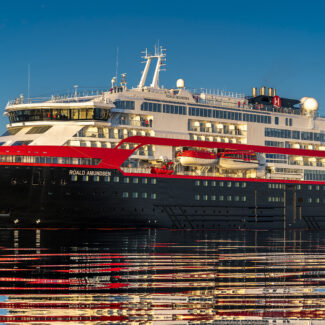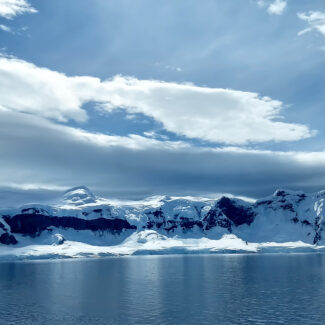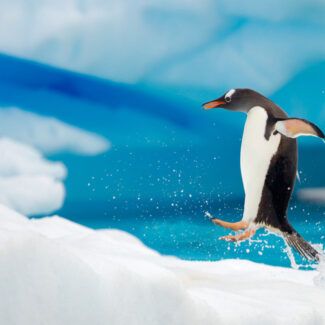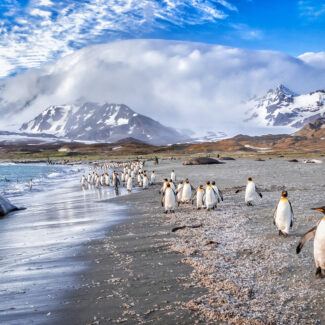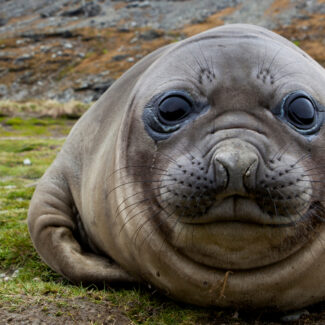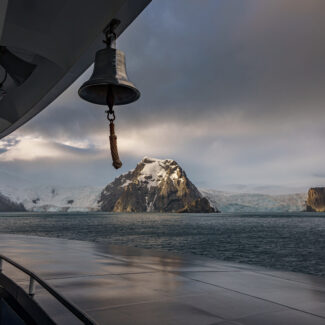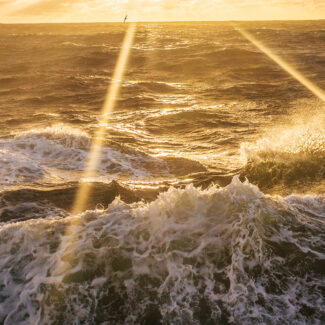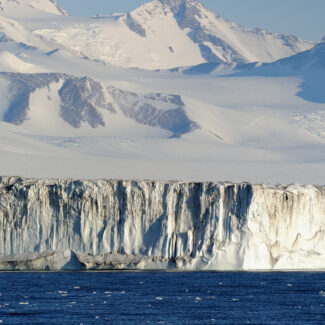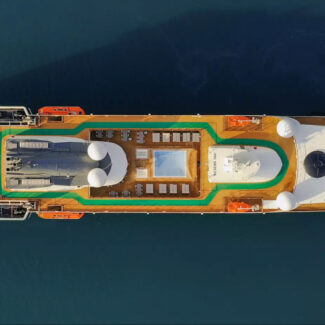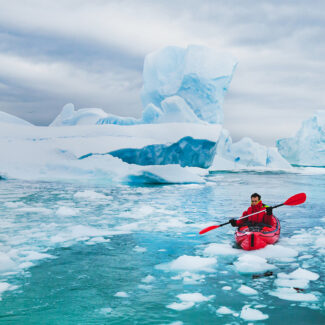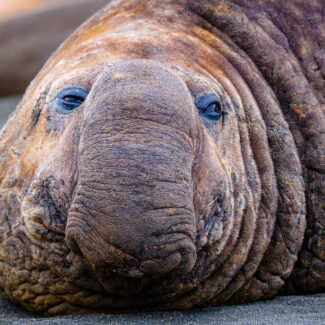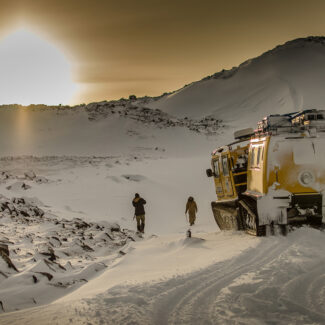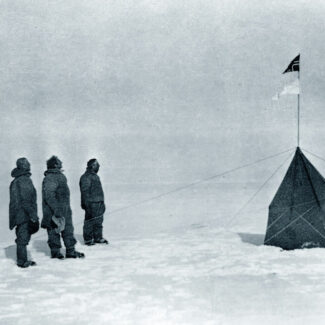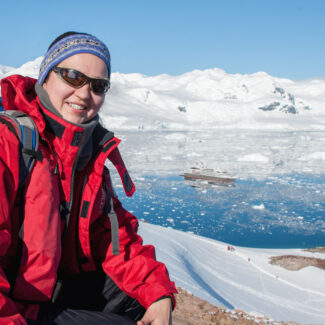Peces y crustáceos antárticos: Merluza negra, pez hielo, krill y otras especies
Those cruising to Antarctica, whether from South America across the Drake Passage or from Australian or New Zealand ports, get to experience one of the planet’s most unique, pristine, and productive marine realms.
The great oceanic river known as the Antarctic Circumpolar Current—the greatest ocean current on Earth—and the marine boundary of the Antarctic Convergence define a strikingly distinct, amazingly fertile Southern Ocean ecosystem encircling the White Continent.
While those darting penguins, cavorting seals, and spyhopping great whales of Antarctica steal the show, their abundant presence in these waters hinges on smaller, less-visible creatures. Fundamental roles at the base and mid-levels of the superlative Southern Ocean food web are played by crustaceans and fish.
These critters deserve a lot more attention for their foundational importance in the ecosystem and because of their commercial importance, which—alongside the specter of climate change—places them, and the ecosystem they help anchor, at risk.
Antarctic Crustaceans
Among the absolute linchpins of Antarctica’s marine food web—and also important components of the White Continent’s lesser-known freshwater realm—are crustaceans. These are among the ginormous menagerie of invertebrates known as arthropods, possessing jointed limbs and exoskeletons.
Below, we’ll profile some of the crustaceans of the Antarctic, beginning with the best-known of all.
The Antarctic Krill
Antarctic krill are the powerhouse of the Southern Ocean’s marine ecosystem—its keystone species—and simply all-around remarkable wee beasties. It’s no exaggeration to say they’re one of the grandest expressions of Earth’s biosphere.
In fact, the Antarctic krill is only one of several species of krill native to the Southern Ocean, south of the Antarctic Convergence/Polar Front. (Worldwide, there are nearly 90 species of these marine crustaceans.) But it’s by far the most significant from an ecological perspective.
After all, it’s reckoned some 380 to 400 million tonnes of Antarctic krill inhabit the Southern Ocean, their biomass likely exceeding our own (“somehow a comforting statistic,” as Peter Matthiessen writes in his Antarctica travelogue, End of the Earth). And this stock exists in huge and dense swarms that may contain 30,000 krill per cubic meter.
Its immense numbers and its trophic (food-web) level explain the Antarctic krill’s impossible-to-overstate ecological importance. It’s a member of the zooplankton guild, but a notably large-sized member. You might think of krill as tiny, but in the big scheme of things they aren’t: They grow to about 2 to 2.5 inches, around the size of a human pinkie. Yet they’re able to feed on quite tiny phytoplankton, which flourish in the Antarctic summer due to the huge pulse of nutrients brought to the surface via upwellings and the around-the-clock sunshine powering photosynthesis.
Perhaps the richest phytoplankton stocks in the world occupy the Southern Ocean, fueling the huge numbers of krill. And by being so numerous and (relatively) good-sized, krill then feed a host of large animals—from penguins to baleen whales—thereby allowing them to access the ecosystem’s prodigious energy only a rung above its primary production via phytoplankton photosynthesis.
Antarctic krill are also massively important in biogeochemical cycling: the transfer of nutrients through the physical environment and biota of an ecosystem. Their diurnal movements up and down the water column, their molted-off exoskeletons and (ahem) poop—drifting down to feed pelagic and benthic creatures—have a huge effect in this regard. In the case of carbon, for instance, krill shuttle large amounts from the surface—by feeding on algae that have absorbed atmospheric carbon—down to their deeper haunts, where it accumulates in the depths through their waste.
Antarctic krill sieve diatoms and other miniscule phytoplankton from the water using their feathery forelegs as strainers. They wield other legs armed with raking bristles (setae) to scrape off algae that accumulates on the underside of Antarctic pack ice.
In the lean months of winter and spring, such grazing of ice-film algae provides an essential food source. But Antarctic krill are also impressively hardy in the face of the seasonal ebb in food supply. Unlike most crustaceans, which stop molting once they reach adulthood, Antarctic krill continue to molt throughout their lives, and can actually shrink in size through the process in a reversal of the normal trajectory.
This allows them to conserve energy and endure long periods—at least 200 days or so—without eating. It’s hard to starve an Antarctic krill!
Other Antarctic Crustaceans
Krill might get top billing, but another group of crustaceans, the copepods, are also extremely important members of the Antarctic planktonic community. They serve a similar trophic link between the phytoplankton they consume and the higher-level predators that scarf them in turn. Among numerous significant Southern Ocean copepod species are Rhincalanus gigas y Calanoides acutus.
Copepods are particularly important in areas with lower krill concentrations. Indeed, an inverse relationship between krill and copepod densities has been observed in some parts of the Southern Ocean, with evidence that Antarctic krill may exclude copepods both by outcompeting them for phytoplankton and by directly preying on them.
Another crustacean order that’s adapted to the extreme conditions of the Antarctic are the shrimplike amphipods. In 2009, scientists were surprised to find a Lyssianasid amphipod swimming about underneath the nearly 600-foot-thick Ross Ice Shelf in Windless Bight.
Marine species aren’t the only crustaceans to inhabit the Antarctic, either. A variety of freshwater crustaceans, including various copepods, amphipods, and water fleas, call Antarctic (and sub-Antarctic) lakes home.
Crustacean Surprises (and Crustacean Nightmares)
And crustaceans continue to dole out big-time scientific surprises in the Antarctic zone. In 2015, scientists described a brand-new species of yeti crab found prospering around deepwater hydrothermal vents of the East Scotia Ridge. (Bacteria, this yeti crab’s prime food sources, mass on its body’s setae, lending it a hirsute look; the creature was thus nicknamed “The Hoff crab,” referencing actor/singer David Hasselhoff’s hairy chest.)
In 2019, ancient remains of crustaceans (as well as a tardigrade, aka “water bear”), possibly thousands of years old and originating from the Transantarctic Mountains, were retrieved from the long-ice-buried Subglacial Lake Mercer. Then in late 2021, researchers filmed swarms of very-much-alive amphipods within a subterranean river under the Ross Ice Shelf.
A worrisome development on the crustacean front, meanwhile, is the likely invasion of Antarctica’s shallower marine waters by the Antarctic king crab. Like other crabs, this king crab can’t regulate the amount of magnesium it takes up from seawater into its blood in very cold temperatures, which naturally restricts it to balmier depths (generally with temps above 0.5 degrees Celsius/32.9 degrees Fahrenheit). In the Antarctic region, it’s resided in the warmer deep waters of the Southern Ocean, and been absent from the shallower, colder zone of Antarctica’s continental shelf and slope farther south, which have been likely crab-free for at least 16 million years.
But as those shallower waters warm under climate change, king crabs seem to be knocking on the doorstep. The first king crabs on the continental slope were observed in 2003, and their slow march upslope toward the continental shelf continues.
This could have major repercussions, as seafloor life around the Antarctic continent, unlike in other parts of the world, haven’t evolved natural defenses against the crushing claws of crabs, such as hard shells. This puts creatures of the Antarctic continental shelf and slope, such as brittle stars and sea cucumbers, at dire risk from an entirely novel predator.
Antarctic Fishes
More than 320 species of fish inhabit the Southern Ocean along the continental shelf and slope of Antarctica. They belong to a relatively few major taxonomic groups. That reflects the evolutionary history of the White Continent and its associated Antarctic marine realm.
The separation of Antarctica from Tasmania and South America and the opening of the Southern Ocean set the stage. The development of the Antarctic Circumpolar Current (ACC), the great West Wind Drift encircling the Antarctic zone, with its huge and immensely powerful flow and its sharp temperatures and salinity gradients, formed a biological barrier. The Southern Ocean waters to the south grew colder, and Antarctica became mostly ice-locked, with a great seasonal expansion of sea ice in winter.
Fish to the south of the ACC and the Antarctic Convergence either adapted to the icy waters or died out. This formed a bottleneck of sorts, and allowed the relatively few fish groups, adapting to the polar and subpolar realms, to diversify into different species and ecological niches.
The Nothothenioides
The most significant such group are the fishes of a taxonomic suborder called Notothenioidei, mostly restricted to the Southern Ocean and Antarctic seas. These notothenioids account for about half of all Antarctic fish species and, more impressively, some 90% of the total fish biomass.
The notothenioids radiated into eight families, including three great groups:
- The Nototheniidae, or cod icefishes
- The Channichthyidae: the crocodile icefish or white-blooded fish
- The Bathydraconidae, the dragonfishes
These highly successful Antarctic fishes show some striking physiological characteristics. Among the most notable is the presence of antifreeze glycoproteins, which prevents the fish’s blood and bodily fluids from freezing in the frigid seawater. Uniquely among vertebrates, meanwhile, the crocodile icefish lack oxygen-carrying, red-pigmented hemoglobin in their blood—hence their common label of “white-blooded fish.” They can get away with that down in the Southern Ocean because colder water boasts higher oxygen levels.
Let’s run through a look at some of the notothenioids, with the (obvious) caveat that we’re not doing an exhaustive survey of their kind, let alone all fish found in Antarctica (sorry, snailfishes!).
Antarctic & Patagonian Toothfishes
The formidable-looking toothfishes are higher-level predators of Antarctic seas, the Southern Ocean, and adjoining high-latitude waters of the Southern Hemisphere. Two very similar species constitute the genus: the Antarctic toothfish and the Patagonian toothfish. They’re much better known to the everyday seafood-eater as “Chilean sea bass,” the more gastronomically appealing name under which these cod icefishes are commercially marketed.
The Patagonian toothfish is the more northerly of the two species, and lacks the antifreeze glycoproteins possessed in the poleward-dwelling Antarctic toothfish.
These are the largest of the notothens, capable of growing past six feet long and weighing more than 220 pounds (100 kg). This heft—and the impressively pointy dentition for which they’re named—makes both toothfishes major marine predators. Indeed, the Antarctic toothfish has been called the “shark of the Antarctic,” occupying as it does something of a similar trophic role as, say, a midsized requiem shark in balmier seas.
Mainly bottom-haunting predators, toothfishes will climb into the water column to hunt as well. They feed primarily on fish and cephalopods as adults. The Antarctic toothfish diet is known to include grenadiers (aka rattails), icefish, silverfish, blue antimoras, and eel cods. It also pursues the glacial squid and even the huge colossal squid, at least in the form of juveniles and weakened or wounded individuals. In rare instances, Antarctic toothfish have even been documented snatching Adélie penguins.
Studies on Patagonian toothfish suggest they similarly feast on a variety of fishes—rattails, hakes, morid cods, the longtail southern cod, and others—as well as greater hooked squid, Patagonian longfin squid, and other cephalopods, as well as shrimp.
Toothfishes—which may live four or five decades—are themselves important prey items for larger Antarctic and sub-Antarctic hunters. The Antarctic toothfish is taken as a subadult by albatrosses and other seabirds, and as an adult by such predators as southern elephant seals, fur seals, orcas, and sperm whales. The colossal squid, that occasional prey item of the Antarctic toothfish, also turns the tables, known to attack toothfishes hooked on longlines (as orcas have been seen to do).
Antarctic Silverfish
Most of the notothenioids are partly or wholly bottom-dwelling fish, but the Antarctic silverfish, about five to 10 inches long, is a true pelagic or open-water species. Indeed, it’s the main pelagic fish of the far Southern Ocean and Antarctica.
What do Antarctic silverfish eat? Mainly krill, copepods, and other planktonic prey. In turn, the silverfish is a hugely important food source for a great variety of creatures: from toothfishes to penguins, seabirds, and seals.
The Antarctic Dragonfishes
Some 15 or so species of Antarctic dragonfishes call the seafloor of the continental shelf and slope around the White Continent home. Some may reach 20 inches (50 cm), though most are smaller. One species, the Antarctic naked dragonfish, lays its eggs close to the Ross Ice Shelf in McMurdo Sound.
The White-blooded Fishes/Crocodile Icefishes
Fifteen or 16 recognized species of white-blooded fishes or crocodile icefishes—those hemoglobin-lacking eccentrics—occupy Antarctic/Southern Ocean waters. The distribution of only one species, the pike icefish, extends north of the Antarctic Convergence; it may be found up into the Straits of Magellan and Falkland Island waters.
The mackerel icefish is a notable member of the family, known for its daily vertical migration in schools through the water column and serving as an important prey item for bigger fish, pinnipeds, and seabirds.
Then there’s the Jonah’s icefish, which in 2021 dazzled scientists aboard a German icebreaker in the Weddell Sea, who filmed the largest known nursery yet documented: some 60 million icefish nests on the seafloor, each guarded by an adult.
Descargo de responsabilidad
Nuestras guías de viaje tienen únicamente fines informativos. Si bien nuestro objetivo es proporcionar información precisa y actualizada, Antarctica Cruises no hace ninguna representación en cuanto a la exactitud o integridad de cualquier información en nuestras guías o encontrado siguiendo cualquier enlace en este sitio.
Antarctica Cruises no puede y no aceptará responsabilidad por cualquier omisión o inexactitud, o por cualquier consecuencia derivada de ello, incluyendo cualquier pérdida, lesión o daño resultante de la visualización o uso de esta información.


